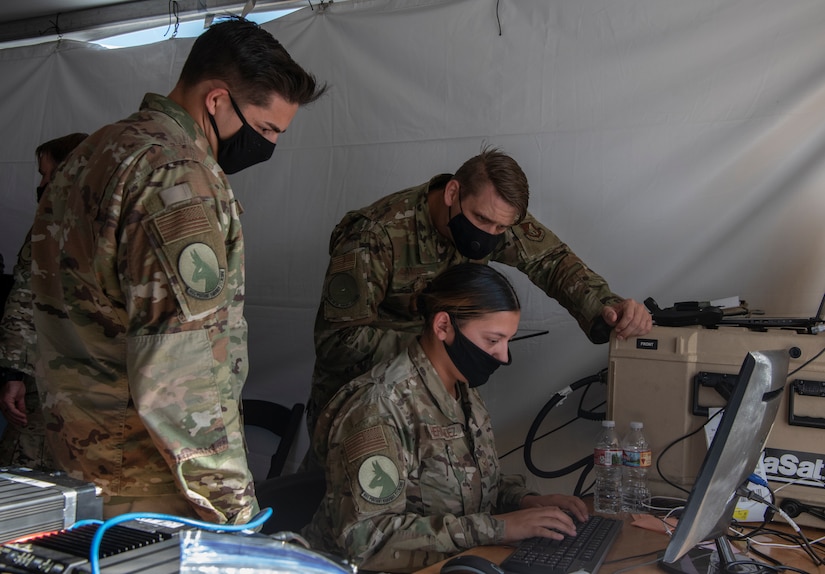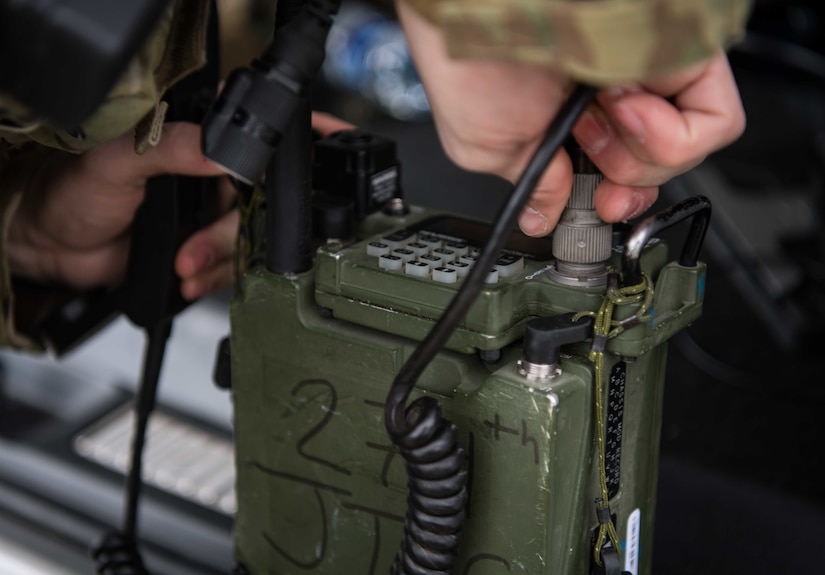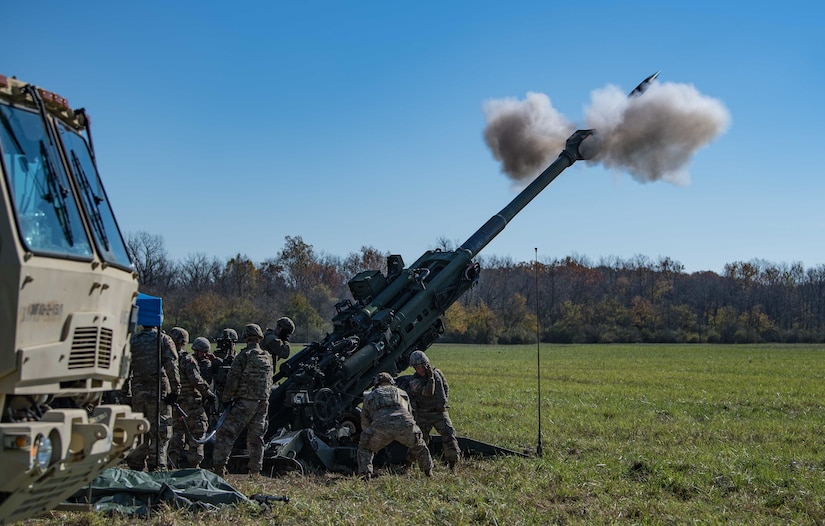Nov. 30, 2020 | , DOD News
The Joint All-Domain Command and Control framework is not just the bailiwick of communications personnel – it is warfighting business, said Marine Corps Lt. Gen. Dennis A. Crall.
Crall is the Joint Staff's director of command, control, communications and computers – commonly called the J-6. He is also the chief information officer for the Joint Staff.

He emphasizes that the Joint All-Domain Command and Control framework– the JADC2 – belongs to warfighters. "This is warfighting business. It's not J-6 business. It's not CIO's business. It belongs with the warfighter," the general said during an interview about what is DoD's strategic approach to fighting the wars of the future.
The framework is DOD's effort to amalgamate sensors with shooters across all domains, commands and services. It sounds like simply a communications effort that will take decades to happen. Crall insists it will not. "This is about fires, and speedy engagement," he said. "If you think of it in those terms, we need to set aside for a minute what we own and what we do and look at where the department needs to be. We can then look at where we need to be based on time."
The services each have a system looking to tie sensors to shooters. The JADC2 will gather all sensor information and connect all warfighters. A threat could be sensed by an Air Force unmanned aerial vehicle but the best weapon against it could be a Navy missile fired from offshore.
A call for fire from an infantry battalion could be answered by tube artillery, rocket artillery, naval gunfire, close-air support from any service or something else.
Some of this is already happening, and Crall sees the program growing and evolving. "There are things we can do immediately," he said. "We might onboard some of these things, because they're available. You fight with what you have, not with what you want. But eventually, you will fight with what you want. So, the idea of looking at short, medium, and long range is very critical. We can't take our eye off the horizon of what we need."
Crall wants to ensure that requirements for the JADC2 framework are stated very clearly. "We will drive the JADC2 strategy to the need, and then examine what we have, and find out which pieces fit well and which pieces don't," he said.
Like every other aspect of the department, JADC2 must contribute to the national defense strategy's lines of effort. "Does it increase lethality," Crall asked. "The answer should be yes. [JADC2] makes us more lethal. We're a warfighting organization. That's what this is designed to do.''
The framework will strengthen partnerships, another line of effort in the JADC2 strategy, which is currently in the works and being drafted by Crall's staff. Allies and other mission partners are being brought to the program now and not as "a bolt on" after the framework is fielded. He noted that it is very unlikely the United States would do anything without allies and partners, and they will have their own sensors and systems that need to be accommodated. Bringing in the Five-Eye allies early in the "build" of JADC2, just makes sense, he said.

"We're never going to fight alone, we're going to fight with partners," he said. "So [JADC2] has got to mean the same thing to them as it does to us."
The third line of effort is reform and the JADC2 framework is all about changing the paradigm. "It's not a good thing to have everyone run off and develop something on their own. You end up with this idea that if it doesn't work well, at least it's expensive," he said. "We have to spend the money wisely."
The JADC2 strategy consists of lines of effort and milestones. The lines of effort have objectives and tasks and there is a plan of attack. "We have to make sure that we are working together rather than potentially at cross purposes," he said.
He said the services are working together. The service systems are "not quite integrated" but they all show promise as Crall's folks try to determine what it "looks like for the department."
Different people look at JADC2 from different perspectives. Some see descriptions of it and only concentrate on the adjectives, he said. Speed, resilient, persistent are just some and they form the "commandments" officials would compare these actions against.
Other people look at JADC2 and just see the verbs: Sense and act. "There's a lot of sensors on the battlefield," Crall said.
The growing Internet of Things has produced information that exceeds the ability to process it casually. "It comes at us in torrents, and every month, it seems we have a new sensor and a new feed," the general said. "And all this will wind up on the cutting room floor, if we don't automate and speed this up."

The military has no problem acting, he said. "We can make decisions at speed if that information is refined," he said. This will require some level of artificial intelligence.
Finally, to others who read the requirements they will only see the nouns. "What radio, what antenna?" Crall said. "What's the next thing you can touch and buy?"
All of these parts of speech need to be reconciled. All are important. All contribute to the framework. All have to be in sync for JADC2to work.
"In my experience, most things that are labeled interoperable, don't work together," Crall said. "It's an interface. [The system] is working, but it's not native."
Making systems interoperable is not easy, it is not cheap and most systems resist change, Crall said. "When you change one end, you've got to change a long laundry list of things to make them work together. We've got to get out of that business."
Crall's office, in concert with the DOD chief information officer, is bringing this together by working the different parts but using the same approach.
Looking to the future of JADC2, there are exercises and demonstrations, such as Bold Quest, that display capability right now. "If you view this as a puzzle, there are aspects to this capability we can employ today," the general said. "We don't have to wait for five years."






No comments:
Post a Comment